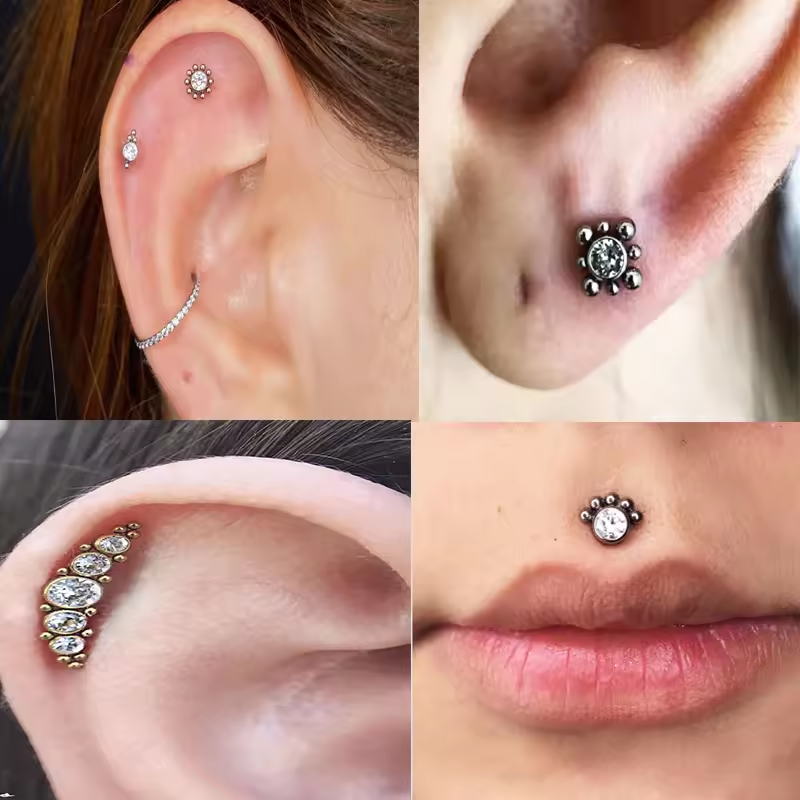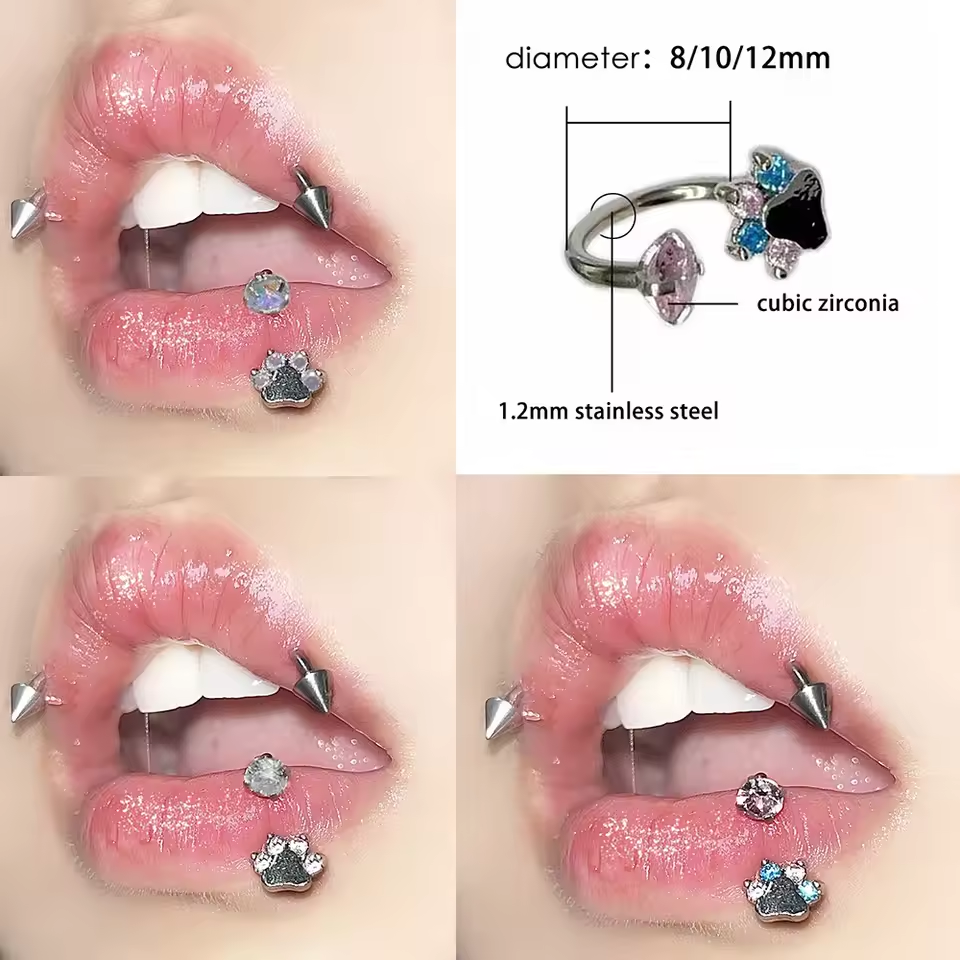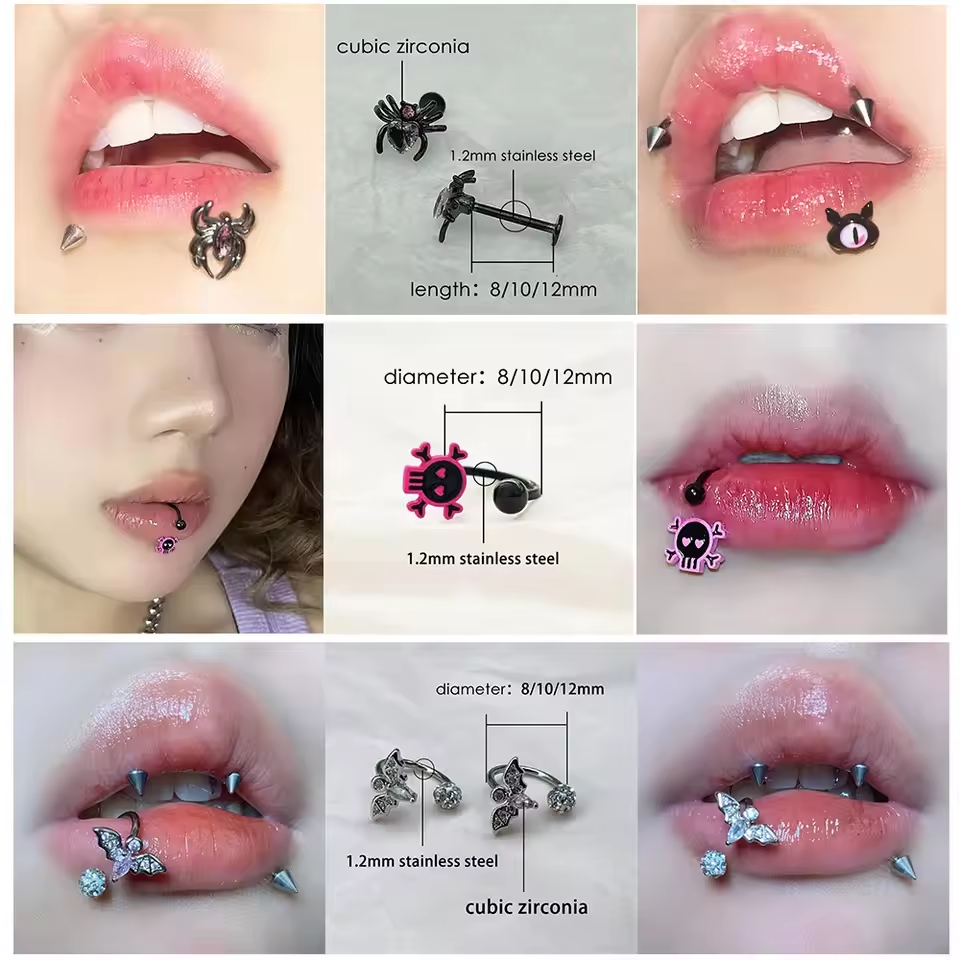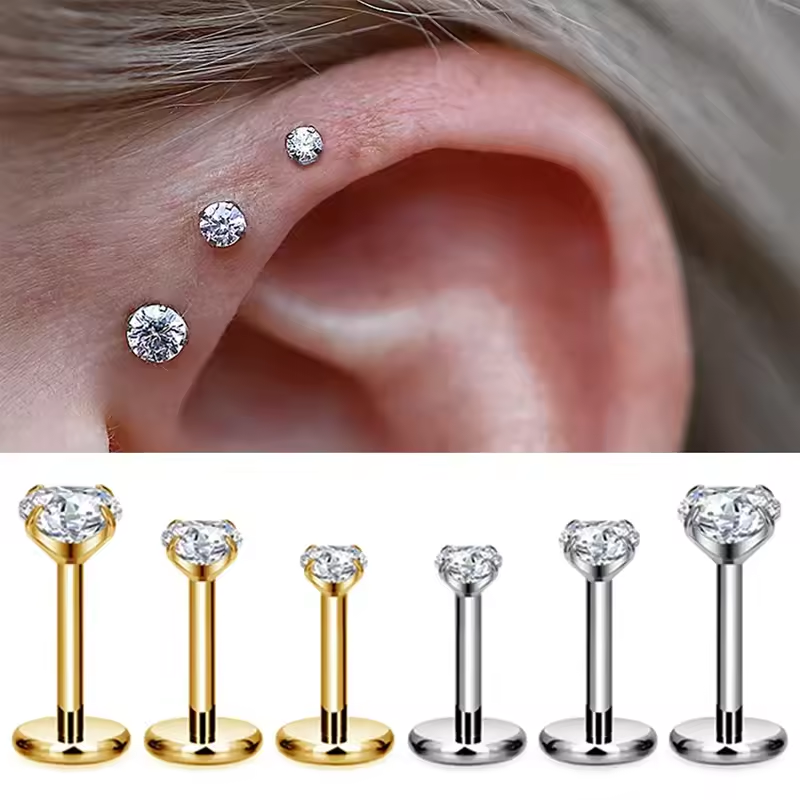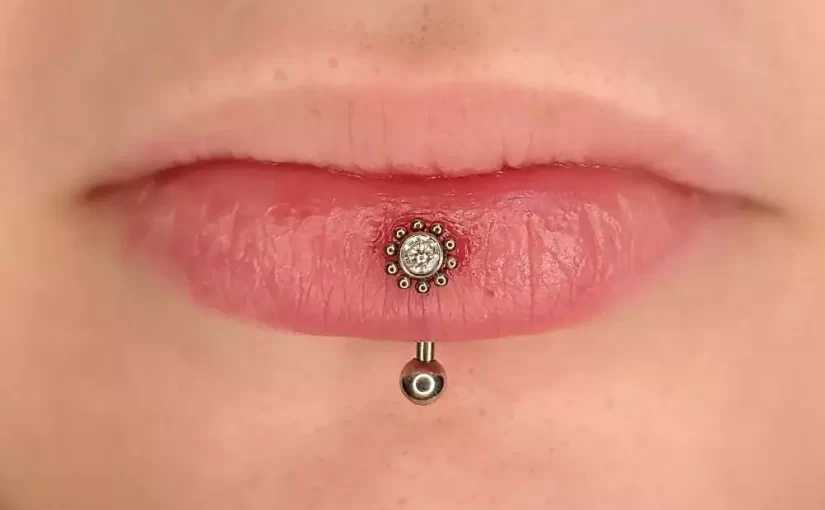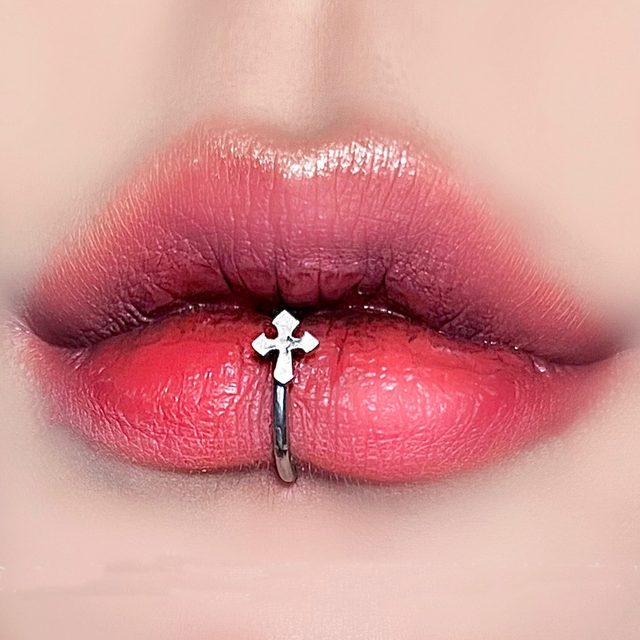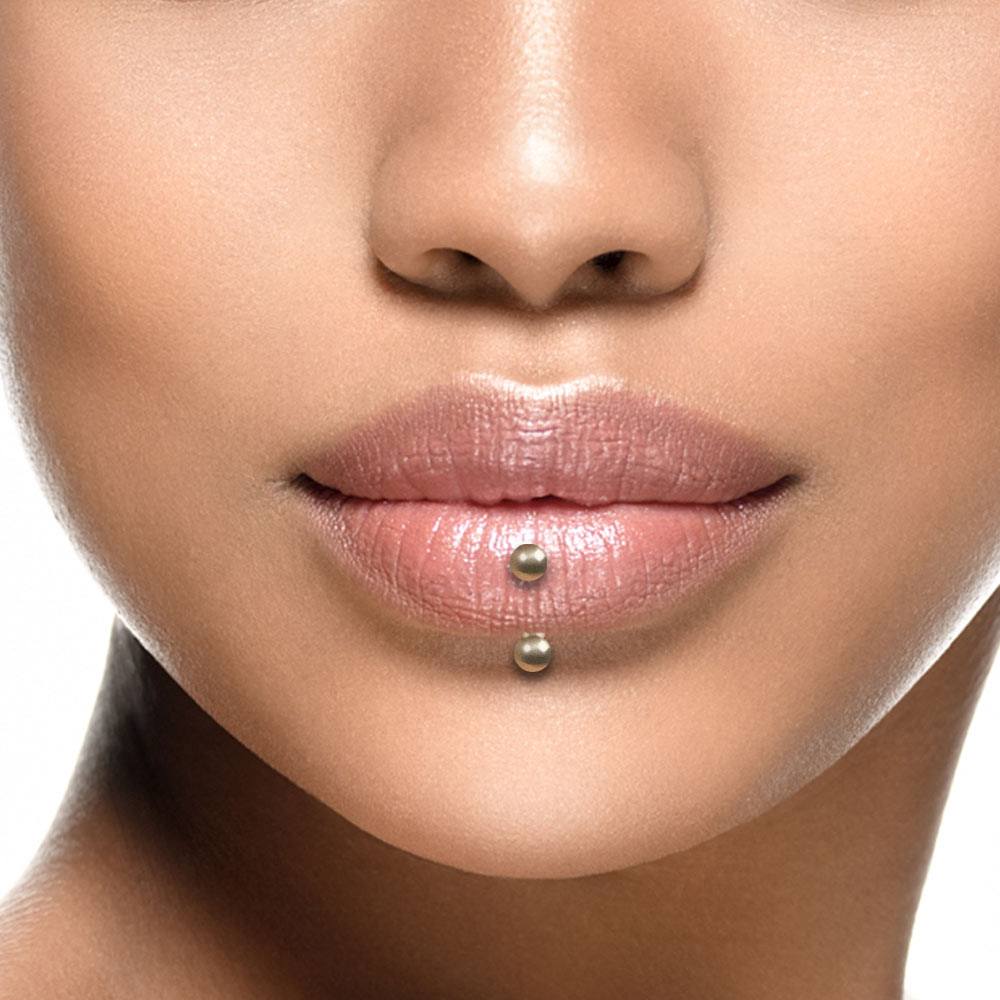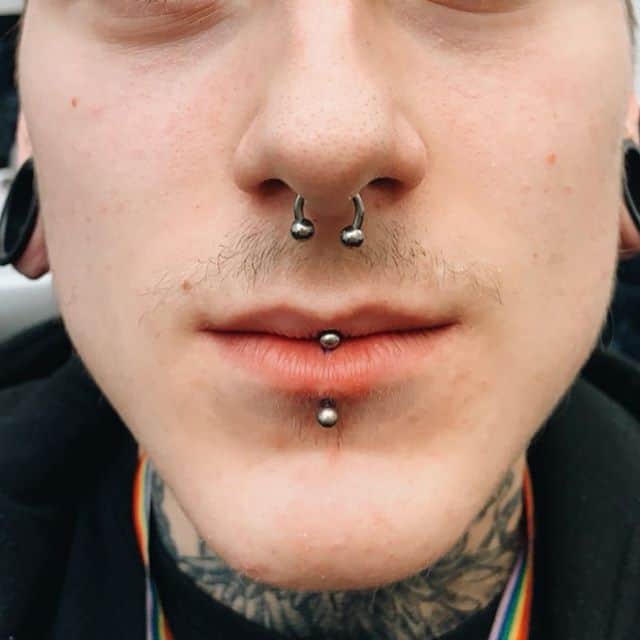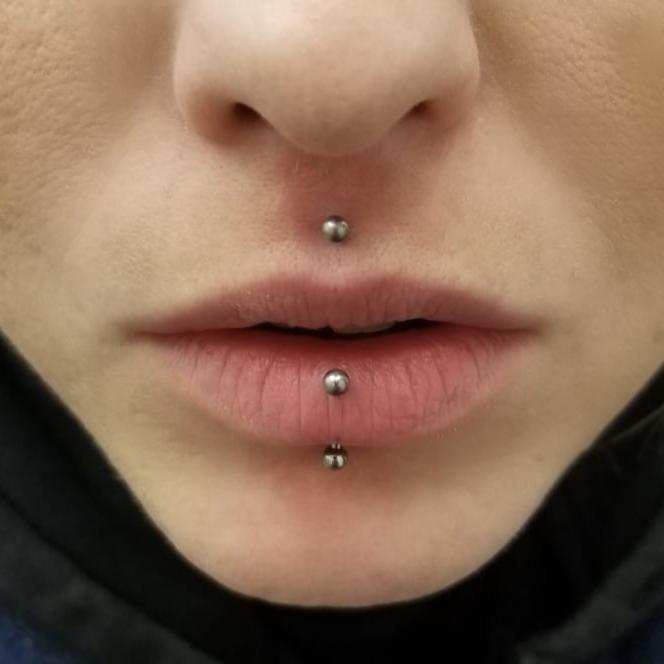Introduction to Vertical Labret Piercings: Style and Anatomy
Vertical labret piercings have surged in popularity as a versatile and subtle form of body art. Unlike traditional horizontal lip piercings, this style places the jewelry vertically between the lip and gumline, creating a minimalist yet striking look. However, its placement near sensitive oral tissues requires careful consideration of anatomy, pain tolerance, and aftercare.
Key considerations for newcomers:
- Anatomical Fit: Ensure there’s enough space between your gumline and lip for jewelry placement.
- Jewelry Material: Surgical steel or titanium are safest for hypoallergenic properties.
- Piercing Studio Standards: Choose licensed professionals with sterilized equipment.
Vertical Labret Placement: The Science and Aesthetics
Vertical labret placement is a precise art that balances anatomical safety and visual appeal. The piercing sits vertically between the lower lip and gumline, typically centered below the midline of the mouth for symmetry. Below is an in-depth guide to optimizing placement:
Anatomical Considerations:
- Gumline Distance: Maintain at least 1/4 inch (6mm) between the jewelry and gumline to prevent recession.
- Bone Structure: Avoid piercing over teeth roots (visible via X-rays in complex cases).
- Angle Adjustment: A 45–60° angle ensures the jewelry sits securely without pressing against teeth.
Aesthetic Design Principles:
- Face Shape Matching:
- Round faces: Place slightly lower to elongate proportions.
- Square faces: Center placement softens angular features.
- Oval faces: Flexibility to experiment with micro-offsets.
- Jewelry Proportions:
- Jawline Alignment: Align the jewelry midpoint with the jawline for symmetry.
- Length: 12–15mm for most faces; 16–18mm for those with thicker lips.
Placement Techniques:
- Marking Process: Use temporary ink to test angles and distances before piercing.
- Patient Feedback: Adjust placement based on comfort and visibility preferences.
Common Errors to Avoid:
- Too Shallow Placement: Risks piercing through lip tissue.
- Too Close to Teeth: Increases enamel wear risk.
Labret Jewelry Types: Choosing the Perfect Fit
Vertical labret jewelry comes in diverse styles, each with unique pros and cons. Below is a detailed comparison of materials, designs, and use cases:
Ball Closure Posts:
- Design: A threaded post with a removable ball.
- Pros:
- Secure fit once tightened.
- Hypoallergenic materials (titanium or gold).
- Cons:
- Requires professional resizing for removal.
- Potential irritation from the ballhead rubbing gums.
- Best For: Long-term wearers prioritizing security.
Threadless Posts (Beaded Ends):
- Design: A solid post with permanently attached beads.
- Pros:
- No threads to trap debris.
- Lower gum irritation risk.
- Cons:
- Prone to shifting during healing.
- Less customization.
- Best For: Sensitive individuals or beginners.
Curved Barbells:
- Design: A curved rod with balls at each end.
- Pros:
- Allows charms or colored beads for expression.
- Versatile for experimenting with styles.
- Cons:
- Higher risk of catching on teeth/lip.
- Bulky for minimalist looks.
- Best For: Trendsetters and jewelry collectors.
Material Comparisons:
- Titanium: Lightweight and biocompatible.
- Biothane: Soft plastic ideal for gum-friendly wear.
- Gold: Non-reactive but costly.
Brand Recommendations:
- For Healing: Surgical steel from Bodygauge.
- For Customization: Industrial Strength curved barbells.
Does Vertical Labret Damage Teeth? Risks and Prevention
One of the most debated concerns is whether vertical labret jewelry harms teeth. Below is an evidence-based analysis of risks and mitigation strategies:
Potential Risks:
- Enamel Erosion:
- Grinding or clenching jewelry can wear enamel over years.
- A 2023 Journal of Oral Health study found enamel thinning in 12% of long-term wearers.
- Gum Recession:
- Improper placement causes tissue irritation and bone loss.
- Tooth Movement: Rare but possible in patients with pre-existing orthodontic issues.
Scientific Consensus:
- Moderate Risk: Studies show 3–5% of wearers face serious issues with proper care.
- Preventable: Most damage occurs due to poor placement or neglect.
Prevention Strategies:
- Jewelry Fit:
- Ensure snug placement—no tighter than the gumline.
- Use shorter posts to minimize tooth contact.
- Dental Hygiene:
- Brush jewelry gently with a soft toothbrush.
- Visit dentists every 6 months for enamel scans.
- Behavioral Adjustments:
- Avoid nail-biting or jewelry chewing.
- Use night guards if prone to grinding.
Expert Insight:
Dr. Emily White, DMD, advises: “A well-placed vertical labret is safe, but regular dental checkups are crucial.”
The Piercing Process: What to Expect
Getting a vertical labret involves a precise, pain-manageable procedure. Below is a step-by-step breakdown with tips for a smooth experience:
Step-by-Step Procedure:
- Consultation:
- Discuss desired placement and jewelry type.
- Disclose medical history (e.g., piercings allergies).
- Sterilization:
- Tools must be autoclaved; ask to observe the process.
- Marking:
- Temporary ink marks outline entry and exit points.
- Adjust placement with a mirror to ensure symmetry.
- Piercing:
- A hollow needle punctures the tissue in 2–3 seconds.
- Jewelry is inserted immediately to prevent wound closure.
Pain Management:
- Pre-Piercing:
- Apply numbing cream (e.g., Numb-it) 30 minutes beforehand.
- Inhale deeply to relax jaw muscles.
- During: Most describe pain as mild, akin to a sharp pinch.
- Post-Piercing:
- Ice packs reduce swelling.
- Over-the-counter painkillers (ibuprofen) alleviate discomfort.
Post-Procedure Instructions:
- Elevation: Sit upright for 15 minutes to reduce bleeding.
- Avoid: Smoking, alcohol, and strenuous exercise for 24 hours.
Aftercare Basics: Healing and Maintenance
Proper aftercare ensures a smooth 6–8 week healing period. Below is a detailed, stage-by-stage guide:
Week 1–2:
- Cleaning:
- Rinse with saline solution (1/4 teaspoon salt in 8 oz water) 2–3x daily.
- Avoid alcohol-based products which dry tissues.
- Diet:
- Avoid spicy, acidic, or crunchy foods to prevent irritation.
- Drink through straws to minimize contact with the piercing.
- Oral Hygiene:
- Brush teeth gently with a soft toothbrush.
- Use alcohol-free mouthwash (e.g., Listerine Zero) nightly.
Week 3–4:
- Gradual Care:
- Reduce saline rinses to twice daily.
- Introduce solid foods cautiously.
- Monitor Signs of Infection:
- Fever, excessive swelling, or pus indicate infection.
- Seek professional help immediately.
Long-Term Maintenance:
- Monthly Deep Cleans: Soak jewelry in diluted white vinegar to prevent biofilm.
- Jewelry Tightening: Check weekly for looseness (a sign of shifting).
Vertical Labret Jewelry Upgrades: From Healing to Forever
After healing, upgrading jewelry allows personalization while maintaining safety. Below are advanced customization options:
Popular Upgrades:
- Gemstone Balls:
- Diamonds, sapphires, or moissanite add elegance.
- Best Brands: Tactical Innovations for durable gemstones.
- Engraved Posts:
- Add initials, symbols, or small phrases.
- Service Providers: Sterling Piercing Supply offers custom etching.
- Biocompatible Materials:
- PTFE (Teflon) or niobium for extreme sensitivity.
- Recommendation: BioBlu’s hypoallergenic options.
Advanced Designs:
- Chain Links: Add texture with delicate 18k gold chains.
- Stackable Posts: Layer multiple beads for 3D effects.
Avoid:
- Overly Bulky Jewelry: Causes gum irritation.
- Low-Quality Metals: Nickel or cheap alloys risk allergic reactions.
Vertical Labret Trends and Styling Tips
Vertical labret styles evolve with fashion, offering both subtle and bold options:
Current Trends (2024):
- Micro Gems: Tiny crystals (≤2mm) for minimalist looks.
- Ethnic-Inspired Designs:
- Geometric patterns or cultural symbols.
- Retro Revival: Vintage-inspired gold hoops reimagined vertically.
Styling Tips:
- Professional Outfits: Opt for clear PTFE posts or subtle pearls.
- Nightlife: Stack with horizontal lip piercings or ear cuffs.
- Athletic Wear: Choose low-profile threadless posts.
Combination Piercing Ideas:
- Trinity Set: Pair with a monroe and lower lip horizontal bar.
- Ear-to-Lip: Connect vertical labret with a dermal on the chin.
Common Questions and Misconceptions
Q: Can I swim with a vertical labret?
A: Avoid pools/hot tubs for 2 weeks to prevent infections.
Q: Does vertical labret hurt more than other piercings?
A: Less painful than tongue piercings; similar to earlobe pain.
Q: How to hide it for work?
A: Use a clear PTFE post or adhesive bandage temporarily.
Final Tips for Long-Term Satisfaction
To enjoy your vertical labret safely for years, adopt these expert-recommended practices:
Maintenance Checklist:
- Weekly Cleaning:
- Soak jewelry in isopropyl alcohol (70%) for 10 minutes.
- Dry with a lint-free cloth.
- Dental Visits: Annual X-rays to monitor enamel health.
- Jewelry Checks:
- Tighten posts monthly.
- Replace worn-out jewelry before it corrodes.
Common Issues and Solutions:
- Discoloration: Use hydrogen peroxide-free whitening toothpaste.
- Migration: Schedule a re-piercing if jewelry shifts >2mm.
Lifestyle Considerations:
- Sleep Position: Avoid side-sleeping on the piercing side.
- Oral Habits: Break nail-biting or lip-licking behaviors.
